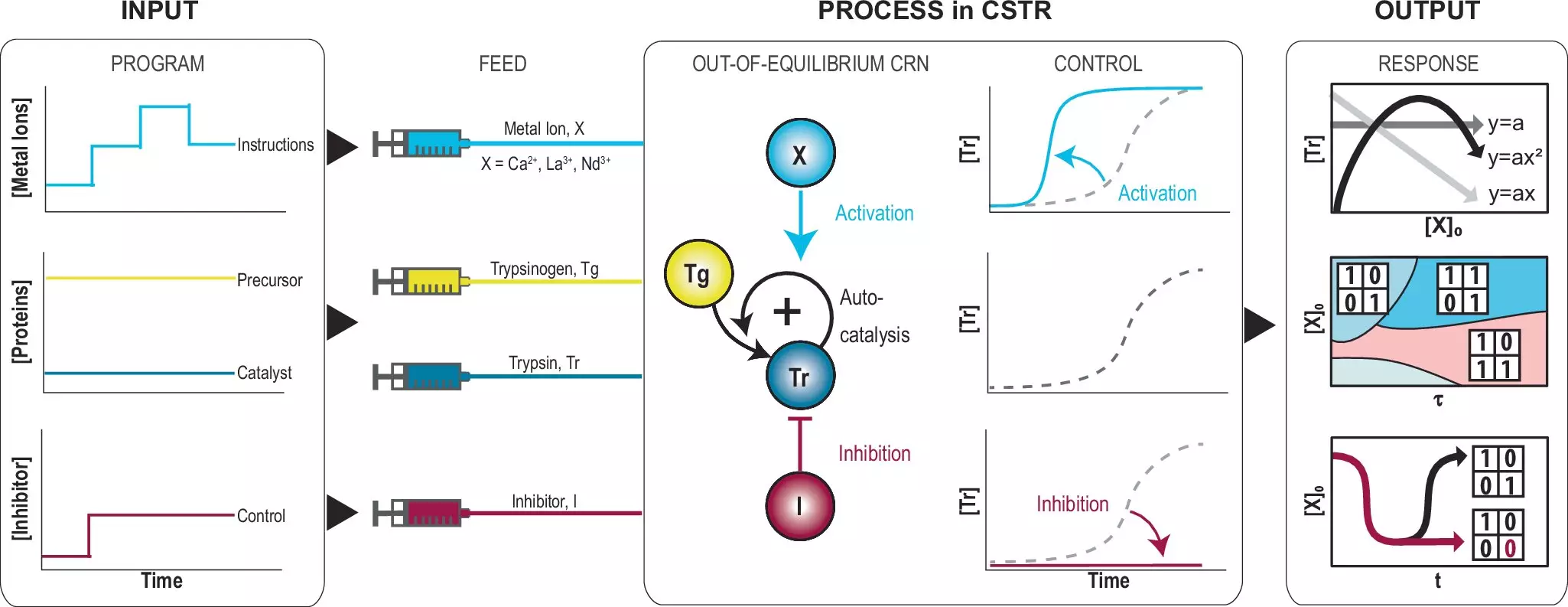In a pioneering study conducted by researchers at the University of Twente, a novel method has emerged that could redefine how we approach computational processes. By harnessing the power of metal ions to meticulously control chemical reactions, this research signals a significant leap towards creating computers that emulate human brain functionality. The findings, recently published in the esteemed journal *Nature Communications*, position this work at the cutting edge of both computational science and bioinspired technology.
Nature has long been an exceptional model for information processing, illustrating how living organisms respond dynamically to their surroundings through intricate chemical reactions. These processes not only operate with remarkable efficiency but also consume drastically less energy compared to traditional digital computing systems. For years, scientists have endeavored to replicate this remarkable efficiency, seeking ways to leverage molecular behavior to emulate the complexities found in living systems. The University of Twente’s research appears to be a crucial stride in that direction.
The team successfully showcased their ability to replicate complex mathematical functions using metal ions, achieving the simulation of polynomials—including linear equations and parabolas—along with Boolean functions that yield varying outputs based on different inputs. This is a vital development, as it marks an advancement in programming chemical reactions that respond not only in real-time but can also “remember” prior states. Albert Wong, one of the leading researchers, emphasized this innovation as a foundations stone for building intelligent systems that could evolve beyond pre-programmed tasks.
A particularly intriguing aspect of this study involves the control of autocatalytic reactions, which are characterized by their self-accelerating nature. By manipulating the conversion of trypsinogen into trypsin with additives that modulate the reaction speed, researchers devised a system capable of existing in dual states. This dual-state capacity is essential, as it allows the system to temporarily ‘store’ information, signaling a primitive form of memory within a chemical medium. This advancement in memory retention opens the door to programming more sophisticated chemical networks that could serve as fundamental building blocks for artificial intelligence and smart material applications.
The implications of this research extend far beyond the immediate applications in AI. The ability to program molecules in such intricate ways could revolutionize fields like nanobiotechnology, potentially leading to breakthroughs in understanding the origins of life and developing advanced materials at the molecular level. As researchers delve deeper into the myriad applications that could stem from manipulating chemical reactions akin to brain functions, the entire landscape of scientific inquiry is poised for transformative changes.
The University of Twente’s research not only provides a glimpse into the future of intelligent systems but also unravels the complexities of life’s fundamental processes—a quest that could redefine both computational and life sciences for decades to come.


Leave a Reply